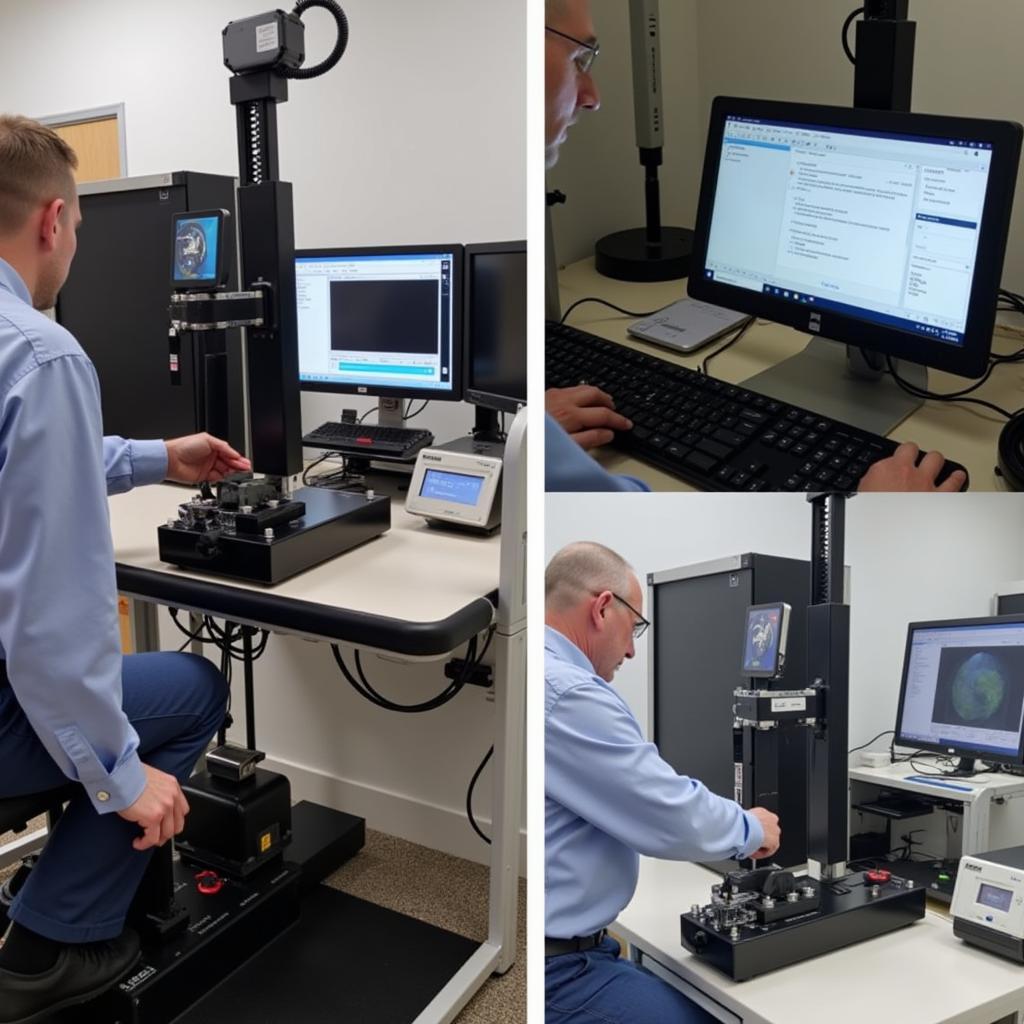A Tool To Push Car Pedals can be a lifesaver in various situations, from testing brake functionality to accommodating drivers with disabilities. This guide explores the different types of pedal pushing tools available, their uses, and how to choose the right one for your needs. We’ll dive into the specifics of these tools and shed light on their importance in automotive diagnostics and everyday driving scenarios.
What is a Tool to Push Car Pedals?
A tool to push car pedals is any device designed to activate the accelerator, brake, or clutch pedal of a vehicle without direct human foot pressure. These tools vary in complexity, from simple manual levers to sophisticated electronic systems. They serve various purposes, including vehicle testing, driver assistance, and research and development.
Why Use a Pedal Pushing Tool?
There are several reasons why you might need a tool to push car pedals:
- Brake Testing: These tools allow mechanics and technicians to test brake functionality accurately and safely, especially during diagnostics or repairs. A consistent and controlled pedal push helps identify issues like uneven braking or spongy pedal feel.
- Accessibility Modifications: For drivers with limited mobility, pedal pushing tools can provide the necessary assistance to operate a vehicle independently. These modifications can be crucial for enabling individuals with disabilities to drive.
- Remote Vehicle Operation: In research and development, or for testing autonomous driving systems, remotely controlled pedal pushing tools are essential for simulating real-world driving scenarios.
Types of Pedal Pushing Tools
Several types of pedal pushing tools cater to different needs and applications.
Manual Pedal Pushers
These are simple, hand-operated levers or push rods that provide direct mechanical force to the pedal. They are cost-effective and portable, making them suitable for basic brake bleeding or testing in smaller workshops.
Pneumatic Pedal Depressors
These tools utilize compressed air to actuate the pedal, offering more controlled and consistent pressure compared to manual pushers. They are commonly used in professional automotive workshops for brake bleeding and other diagnostic procedures.
Electronic Pedal Actuators
These sophisticated tools use electronic motors to control pedal movement with high precision. They are often integrated into automated testing systems and are used for advanced vehicle diagnostics, research, and development of autonomous driving technologies.
car brake fluid oil change tool
Choosing the Right Tool to Push Car Pedals
Selecting the appropriate tool depends on your specific needs and budget. Consider the following factors:
- Frequency of Use: For occasional use, a manual pusher might suffice. However, for regular use in a professional setting, a pneumatic or electronic tool is a more suitable investment.
- Required Precision: If precise control over pedal pressure is crucial, an electronic actuator is the best option.
- Budget: Manual pushers are the most affordable, while electronic actuators represent the higher end of the price spectrum.
- Type of Vehicle: Some tools are designed for specific vehicle makes and models, so compatibility is essential.
How to Use a Pedal Pushing Tool Safely
Safety is paramount when using any tool to push car pedals. Always follow the manufacturer’s instructions and adhere to these general guidelines:
- Secure the Vehicle: Ensure the vehicle is parked on a level surface with the parking brake engaged.
- Proper Connection: Ensure the tool is securely connected to the pedal and won’t slip during operation.
- Controlled Application: Apply pressure gradually and avoid sudden or excessive force.
- Regular Inspection: Inspect the tool for any signs of damage or wear before each use.
car brake fluid replacement tool
“A reliable pedal pusher is indispensable for any serious automotive workshop. It ensures accurate brake testing and efficient fluid changes, ultimately contributing to vehicle safety,” says Michael Stevenson, Senior Automotive Technician at Stevenson Automotive Solutions.
Conclusion: Finding Your Ideal Tool to Push Car Pedals
Finding the right tool to push car pedals can significantly enhance your automotive diagnostic capabilities or improve driving accessibility. From manual levers to advanced electronic actuators, there is a tool to meet every need and budget. By carefully considering your requirements and following safety guidelines, you can select the perfect tool to push car pedals and ensure optimal performance and safety.
 Electronic Pedal Actuator Demo
Electronic Pedal Actuator Demo
FAQ
-
What are the benefits of using a pedal pushing tool for brake bleeding?
-
Can I use a manual pedal pusher for professional automotive diagnostics?
-
What are the safety precautions when using a pneumatic pedal depressor?
-
How do electronic pedal actuators contribute to autonomous vehicle development?
-
What is the average cost of a tool to push car pedals?
-
Are there specific pedal pushing tools for different types of vehicles?
-
Where can I purchase a reliable tool to push car pedals?
Common Scenarios and Questions
-
Scenario: A mechanic needs to bleed the brakes of a customer’s car.
-
Question: Which type of pedal pushing tool is most suitable for this task?
-
Scenario: A person with limited leg mobility wants to drive a car independently.
-
Question: What type of pedal pushing tool can provide the necessary driving assistance?
-
Scenario: An engineer is testing autonomous braking systems.
-
Question: Which type of pedal pushing tool is required for this advanced application?
Need assistance with car diagnostics or choosing the right tools? Contact us via WhatsApp: +1(641)206-8880, Email: [email protected] or visit us at 910 Cedar Lane, Chicago, IL 60605, USA. Our 24/7 customer support team is ready to help.

Leave a Reply